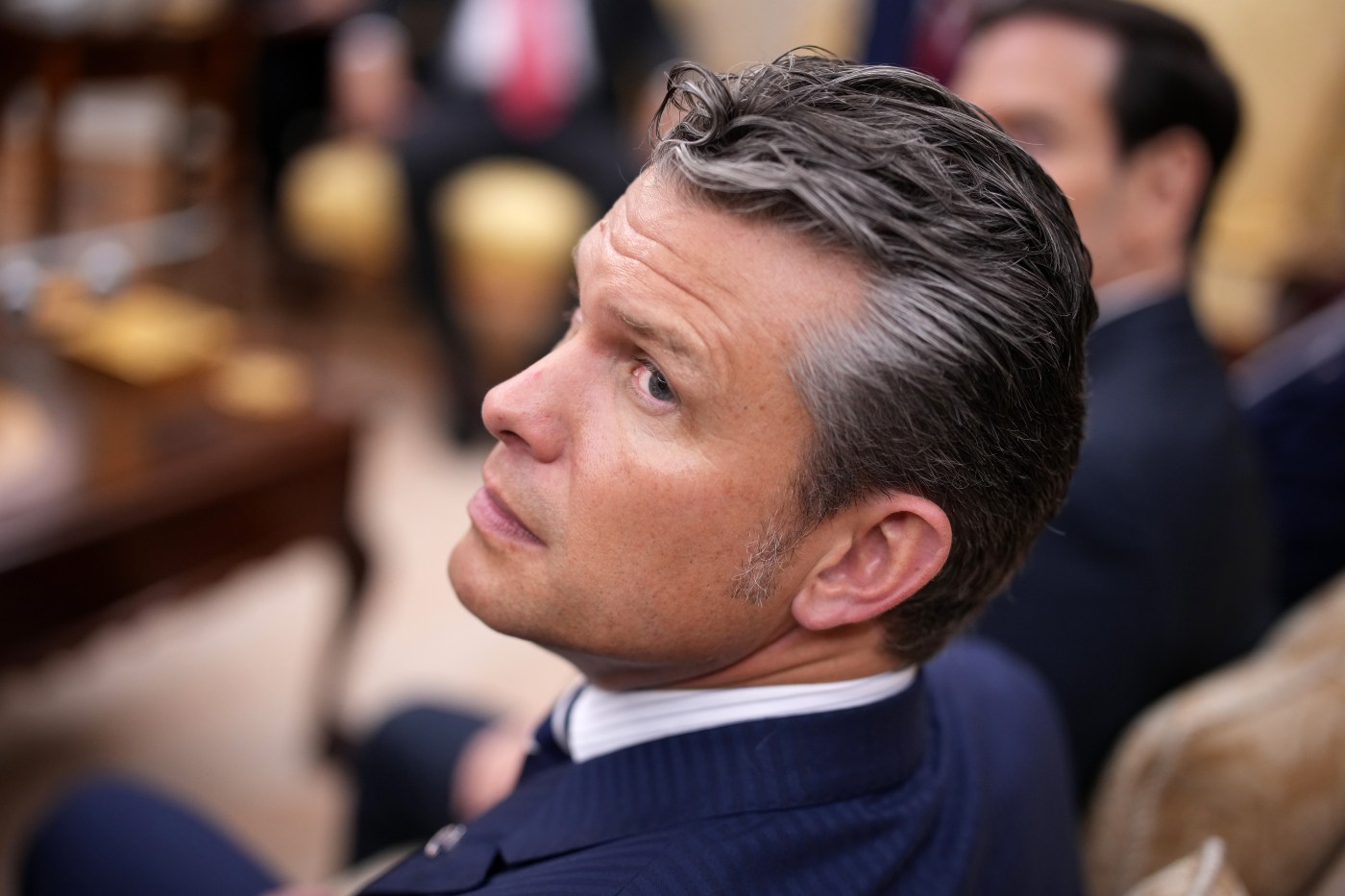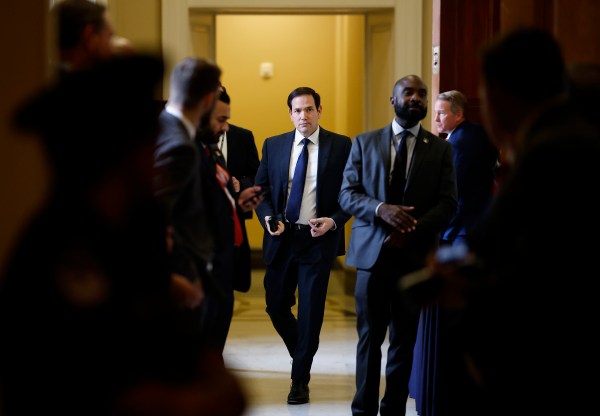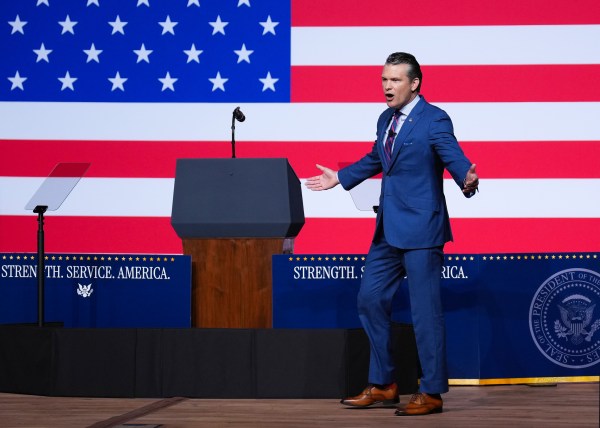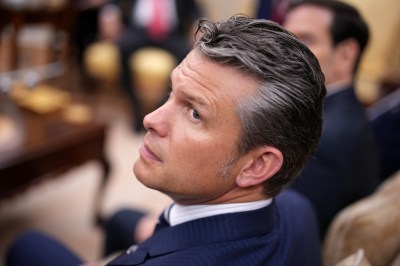Turn any article into a podcast. Upgrade now to start listening.
Premium Members can share articles with friends & family to bypass the paywall.
Despite doomsaying about loyalty oaths ahead of Pete Hegseth’s gathering of top U.S. military officers this week, it appears not every decision the defense secretary makes is indicative of creeping fascism. We can take comfort in the fact that many of his decisions are not authoritarian, but rather incredibly stupid and amateur. Indeed, his conclave of the bulk of America’s generals and admirals falls firmly into the latter category.
First reported by the Washington Post last week, Hegseth directed that every general and flag officer in command, and their senior enlisted advisers, travel to the Quantico Marine Corps base for an in-person meeting held Tuesday. In the lead-up, the Pentagon was closed-lipped about the intent of the meeting, the urgency of convening it within a week of notification, and the reasons for holding it in person.
To be sure, part of a defense secretary’s role is to impart his or her vision to the country’s defense and military apparatus. And the means by which he or she delivers that message is at his or her discretion. Therefore, convening a quorum of 800 senior leaders is within the secretary’s authority—but leaders at the national level are hired in part to exercise their judgment to discern between what they can do and what they should. In other words, is the desired result of these types of meetings important enough to justify the cost and disruption?
“In many ways, this speech is about fixing decades of decay,” Hegseth said. “We’re ending the war on warriors.” Despite producing lots of tough-talking soundbites, however, the “substance” of the event seemed to be light, to put it generously. The secretary laid out a vision of a warrior culture for the department that he has presented multiple times, in multiple formats, including in his book on the topic. But one would be hard pressed to find an idea, or even a phrase, which Hegseth himself had not repeated ad nauseam for the past eight months. While it is true that physical fitness and uniform standards are important, neither argument is revelatory, nor should they be the most pressing priority of a secretary of defense.
President Donald Trump, for his part, took the opportunity to air political grievances before the captive audience of commanders. While the overtly partisan portions of the speech were inappropriate for the audience, the senior officers listened respectfully without cheering, clapping, or reacting—a welcome change from a more enthusiastic reception to Trump’s similarly inappropriate speech at Fort Bragg in June.
Not only was this event a performance lacking in real substance, it also caused significant tumult to pull off. The Pentagon’s global enterprise is massive, both in scale and complexity. It is the largest agency in the federal government, with operations and priorities spanning the entire world and time horizons decades into the future. To move the machinery of American defense, a secretary is given a wide variety of tools to convey his or her vision, guidance, and orders. There are written communications, both in the form of published policy documents and private secure networks. There are secure video conference capabilities, which allow key leaders and decision makers across every time zone to convene simultaneously. And there is the chain of command, through which the secretary can impart guidance that is then passed to military leaders and translated from the strategic and conceptual to the concrete, eventually reaching the level of the individual soldier, sailor, airman, Marine, or guardian. But of all the possible tools, in-person communication, while it may indeed come with greater impact and clarity, is often the least efficient.
While it is not out of the ordinary for civilian leaders and senior commanders to conduct meetings, councils, and conferences for their subordinate commanders, these usually involve direct subordinates. This gathering went much further. For example, based on the reported guidance that all generals in command positions must attend, the audience would have included the commanding general of the Army’s 25th Infantry Division. The 25th ID commander’s boss is the commander of I Corps, whose boss is the commander of U.S. Army Pacific, whose bosses are both the chief of staff of the Army and the commander of U.S. Indo-Pacific Command, both of whom report directly to the secretary of defense. In other words, Hegseth felt the need to reach down four levels below him rather than allowing commanders one to two levels down to impart the guidance to their respective commands.
Does Hegseth not trust the officers in his direct command to correctly impart his guidance? The military relies on a hierarchical system, and not leaning on commanders to implement strategic vision to subordinates creates micromanagement, distrust, and grinds initiative to a halt. It is also condescending to a group whose number included several former commanders of the Delta Force, the 75th Ranger Regiment, special forces groups, and others for whom a lecture on warrior ethos was far from necessary.
Moving 800 general officers and senior enlisted advisors is no small task, but the level of complexity may not be obvious to the general population. For some of these commanders, the matter of getting to Northern Virginia was as simple as booking a flight on a major carrier and taking a taxi to Quantico. But many of the attendees were commanders overseeing active operations. For example, the combatant commanders leading the 11 geographically aligned or functionally focused unified commands usually need secure communications while in transit, which means traveling on one of the limited Air Force fleet that can support the requirement. Usually, these commanders travel at varied times, allowing the Air Force to sequence the flights of these aircraft accordingly. But this event required significant overlap and simultaneous travel, likely requiring multiple commanders to travel on the same aircraft.
The massive travel directive required leaders to incur some level of risk, balancing between risk-to-force (consolidating multiple commanders on single flights) and risk-to-mission (dispersing commanders in a way that means several are not in communication with their commands during transit). Were either likely to be catastrophic? No. Was it possible that this undertaking could have ended in catastrophe? Of course. Forget any trepidation one might feel as to whether threat actors would try to exploit such a situation; it’s worth remembering that the largest losses of life suffered by both the 82nd and 101st Airborne Divisions since World War II were due to peacetime aircraft crashes. This is in addition to the risk of nearly every major commander in the U.S. military convening in one place at the same time.
Why take the risk for what amounted to a glorified “pep rally”? What crucial bit of new insight did the secretary impart that could not have been delivered via video conference or written guidance? As seems to be the case for many of Hegseth’s social media videos and speeches, this was another example of activity without accomplishment, performance without productivity.
Hegseth has, in the past, tried to distinguish himself from his predecessors by drawing a contrast between out-of-touch generals and a down-in-the-dirt major with “dust on his boots.” The speciousness of the argument aside, the question of whether Hegseth will ever grow into being anything more than one who limits his view to the tactical level, focusing on physical training while eschewing the strategic and institutional demands of his job, remains.
The format of this meeting suggests Hegseth lacks the ability to properly communicate with his global enterprise through more efficient means. And the substance of it indicates that Hegseth lacks the intellectual rigor to properly direct his attention toward preparing his department for the challenges at hand, like revitalizing the defense industrial base, ramping up shipbuilding, and reorganizing the services based on the conflicts we might need to be prepared to face. Instead, Hegseth seems to believe that if he repeats vague proclamations about warrior spirit or purging woke ideology louder, more often, or in different fora, these words will act like an incantation, magically unlocking his desired outcome when said in the right location or combination.
Instead of using his and his commanders’ valuable time to meet the varied demands of their roles and address threats to the country, the secretary decided instead to turn the gears of the global military machine toward facilitating an event aimed at making him feel or appear in charge. As the great Margaret Thatcher said, “Being powerful is like being a lady. If you have to tell people you are, you aren’t.”






Please note that we at The Dispatch hold ourselves, our work, and our commenters to a higher standard than other places on the internet. We welcome comments that foster genuine debate or discussion—including comments critical of us or our work—but responses that include ad hominem attacks on fellow Dispatch members or are intended to stoke fear and anger may be moderated.
With your membership, you only have the ability to comment on The Morning Dispatch articles. Consider upgrading to join the conversation everywhere.